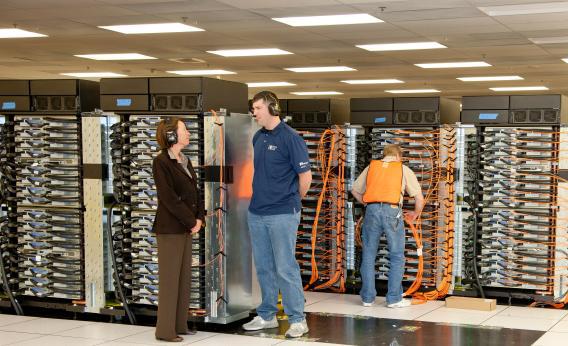U-S-A! U-S-A!
Just in time for Independence Day and the Olympics, Good ol’ America has regained its rightful place atop the Top500 list of the world’s fastest supercomputers. IBM’s new “Sequoia” machine at the Department of Energy’s Lawrence Livermore National Laboratory in California clocks in at 16.32 petaflops, which is, in technical terms, a hell of a lot of flops.
That blows away the previous titleholder, a Fujitsu machine at the RIKEN institute in Kobe, Japan, which manages a measly 10.51 petaflops. The “K computer” is now second-fastest.
The United States also takes home the bronze in supercomputing, thanks to IBM’s new Mira supercomputer at Argonne National Laboratory in Illinois, which can operate a healthy 8 quadrillion floating points per second.
IBM was the first to a petaflop, with its “Roadrunner” machine at Los Alamos National Laboratory in New Mexico hitting the milestone in 2008. In 2010, however, China took the lead, an ignominy that prompted hand-wringing from the president himself in last year’s State of the Union address. Obama can now sleep soundly, though perhaps not for long, since Moore’s Law—which predicts a doubling of processing power every two years or so—seems to be holding strong. (An in-depth post on ComputerWorld points out that IBM’s latest feat shouldn’t be chalked up to Moore’s Law in the traditional sense, though, since Sequoia’s speed is a product of parallelism more than the power of individual processors.)
So to what noble purpose is the red, white, and blue putting this triumphal new machine? Why, curing cancer unraveling the universe’s mysteries simulating exactly what it will look like when we drop our next nuke, of course. Take that, other countries!
